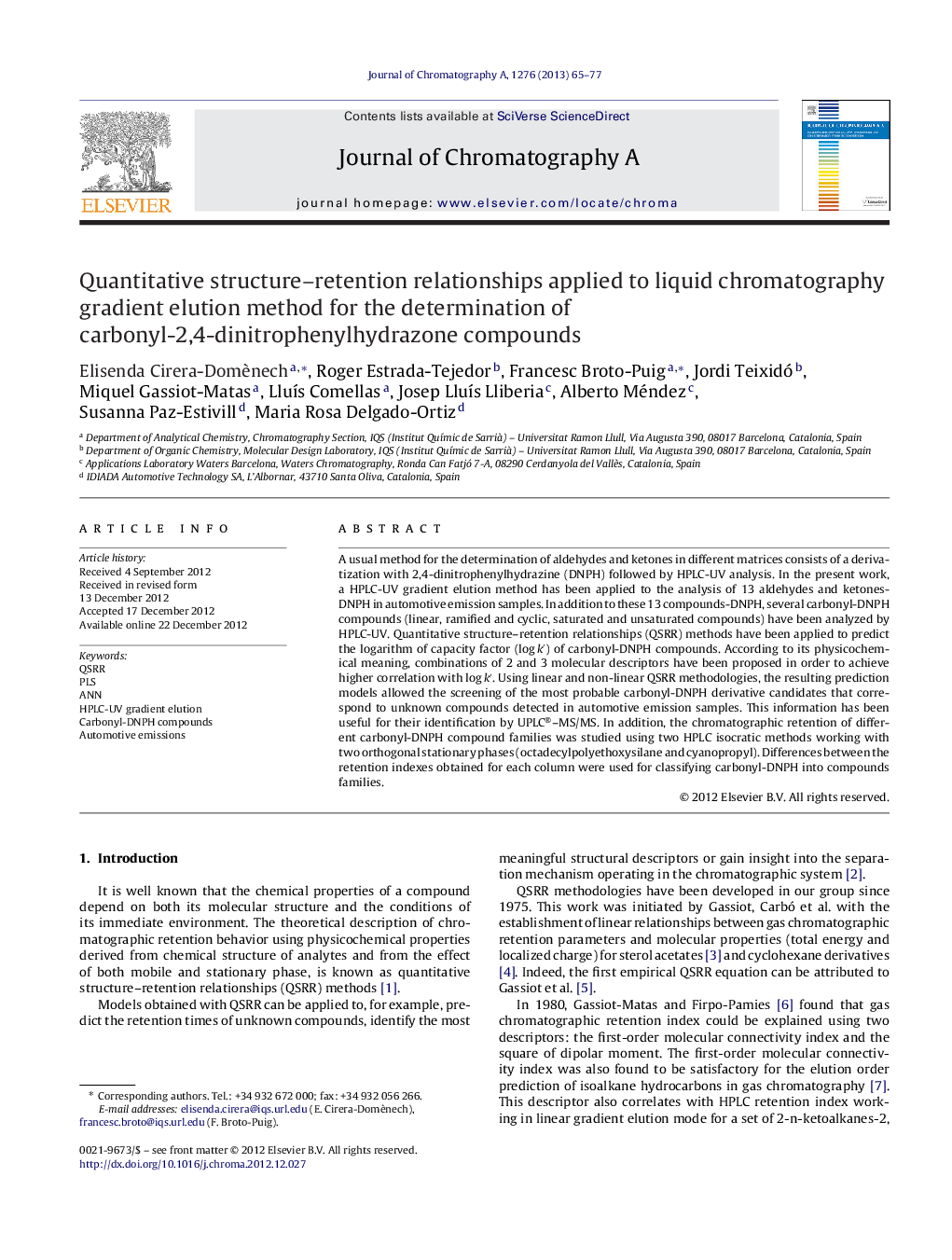| کد مقاله | کد نشریه | سال انتشار | مقاله انگلیسی | نسخه تمام متن |
|---|---|---|---|---|
| 1204766 | 1493650 | 2013 | 13 صفحه PDF | دانلود رایگان |

A usual method for the determination of aldehydes and ketones in different matrices consists of a derivatization with 2,4-dinitrophenylhydrazine (DNPH) followed by HPLC-UV analysis. In the present work, a HPLC-UV gradient elution method has been applied to the analysis of 13 aldehydes and ketones-DNPH in automotive emission samples. In addition to these 13 compounds-DNPH, several carbonyl-DNPH compounds (linear, ramified and cyclic, saturated and unsaturated compounds) have been analyzed by HPLC-UV. Quantitative structure–retention relationships (QSRR) methods have been applied to predict the logarithm of capacity factor (log k′) of carbonyl-DNPH compounds. According to its physicochemical meaning, combinations of 2 and 3 molecular descriptors have been proposed in order to achieve higher correlation with log k′. Using linear and non-linear QSRR methodologies, the resulting prediction models allowed the screening of the most probable carbonyl-DNPH derivative candidates that correspond to unknown compounds detected in automotive emission samples. This information has been useful for their identification by UPLC®–MS/MS. In addition, the chromatographic retention of different carbonyl-DNPH compound families was studied using two HPLC isocratic methods working with two orthogonal stationary phases (octadecylpolyethoxysilane and cyanopropyl). Differences between the retention indexes obtained for each column were used for classifying carbonyl-DNPH into compounds families.
► Good QSRR correlation models were found for gradient and isocratic HPLC-UV methods.
► QSRR models were used to identify unknown compounds in experimental samples.
► A tool to classify carbonyl-DNPH compounds in different families was proposed.
Journal: Journal of Chromatography A - Volume 1276, 8 February 2013, Pages 65–77